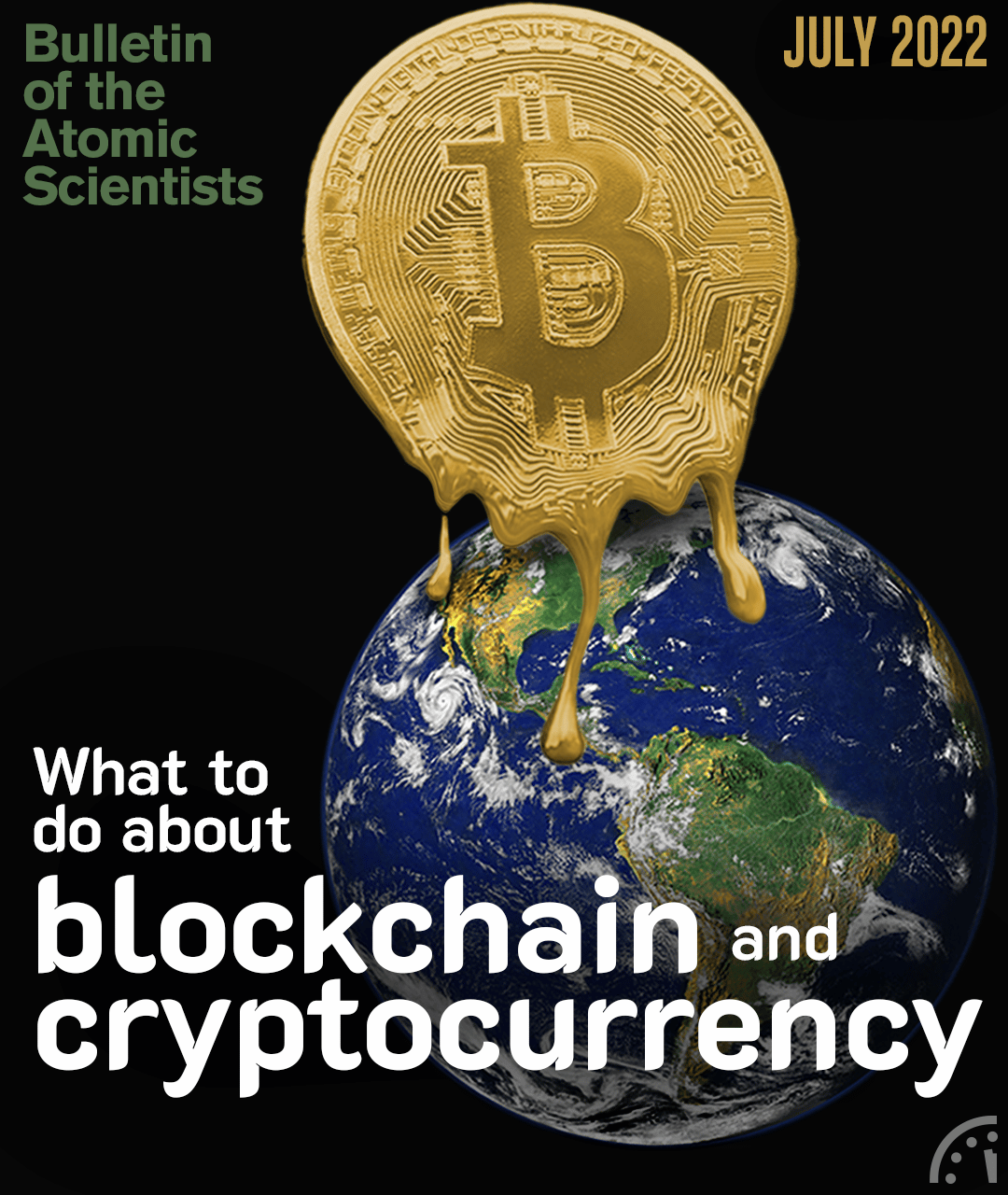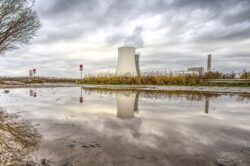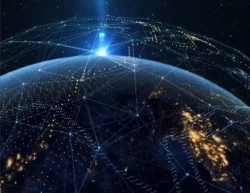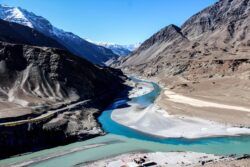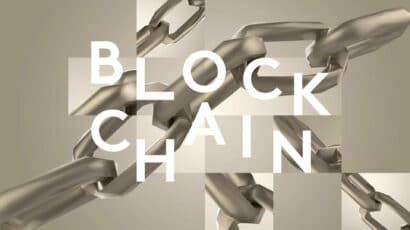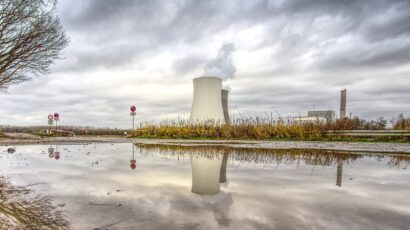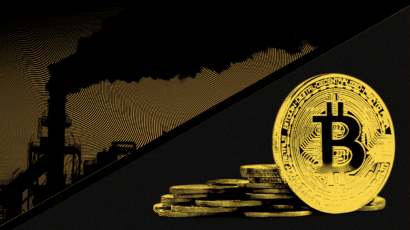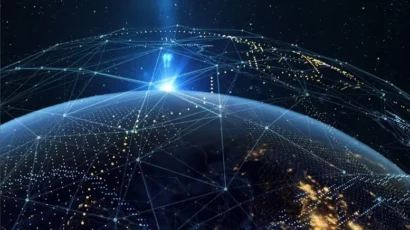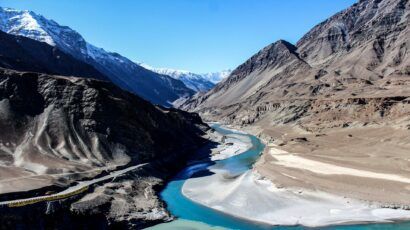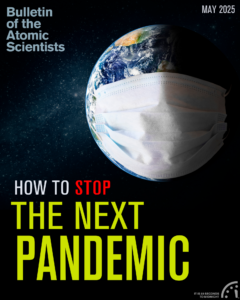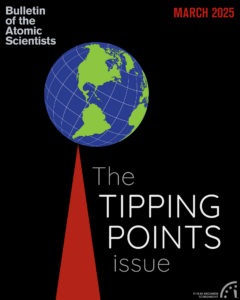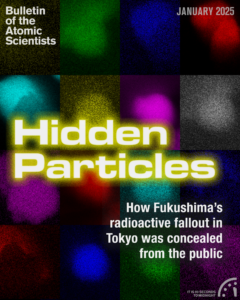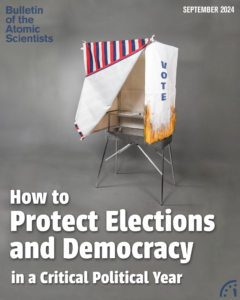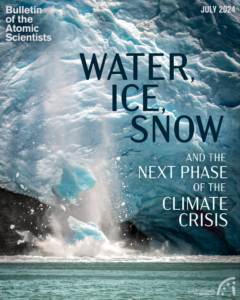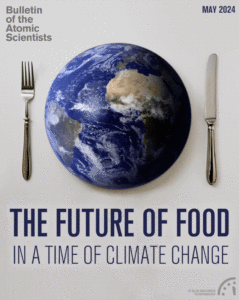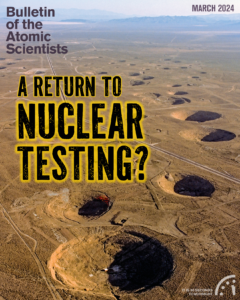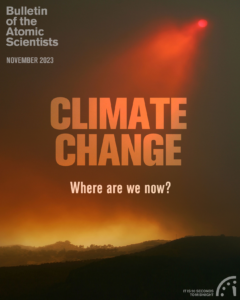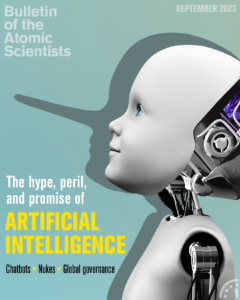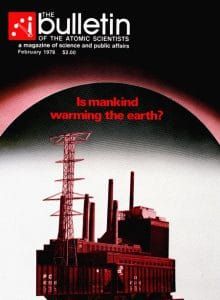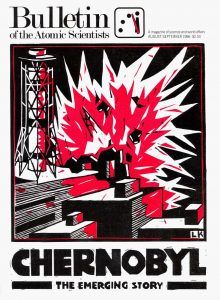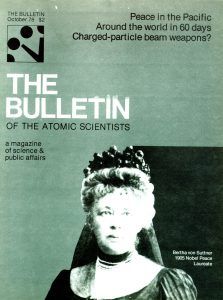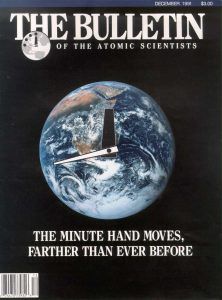DIGITAL MAGAZINE
July 2022
DIGITAL MAGAZINE
July 2022
Cover by Thomas Gaulkin
Introduction: The unintended—and undermanaged—consequences of blockchain and cryptocurrency
After the fall: Bitcoin’s true legacy may be Blockchain technology
Stolen billions from errant mouse clicks: Crypto requires new approaches to attack money-laundering
Blockchain beyond cryptocurrency: A revolution in information management and international security
How bitcoin makes burning fossil fuels more profitable than ever
A US history of not conducting cyber attacks
Climate change and water scarcity will increase risk of nuclear catastrophe in South Asia
Building a nuclear off-ramp following the war in Ukraine
Nuclear Notebook: How many nuclear weapons does India have in 2022?
After the fall: Bitcoin’s true legacy may be Blockchain technology
Stolen billions from errant mouse clicks: Crypto requires new approaches to attack money-laundering
Blockchain beyond cryptocurrency: A revolution in information management and international security
How bitcoin makes burning fossil fuels more profitable than ever
A US history of not conducting cyber attacks
Climate change and water scarcity will increase risk of nuclear catastrophe in South Asia
Building a nuclear off-ramp following the war in Ukraine
Nuclear Notebook: How many nuclear weapons does India have in 2022?
Cover by Thomas Gaulkin
Subscribe now
We've relaunched the Bulletin's award-winning digital magazine. Get access to every issue and our archive going back to 1945.
Magazine archive

Premium subscribers can read the complete Bulletin of the Atomic Scientists’ archive, which contains every article published since our founding in 1945.
This archive was created in honor of John A. Simpson, one of the Bulletin’s principal founders and a longtime member of its Board of Sponsors. This searchable archive provides exclusive online access to original interviews and commentary by luminaries like Albert Einstein, J. Robert Oppenheimer, Ruth Adams, John F. Kennedy, Stephen Hawking, Christine Todd Whitman, US Secretary of Defense William J. Perry, and multiple Nobel laureates.
